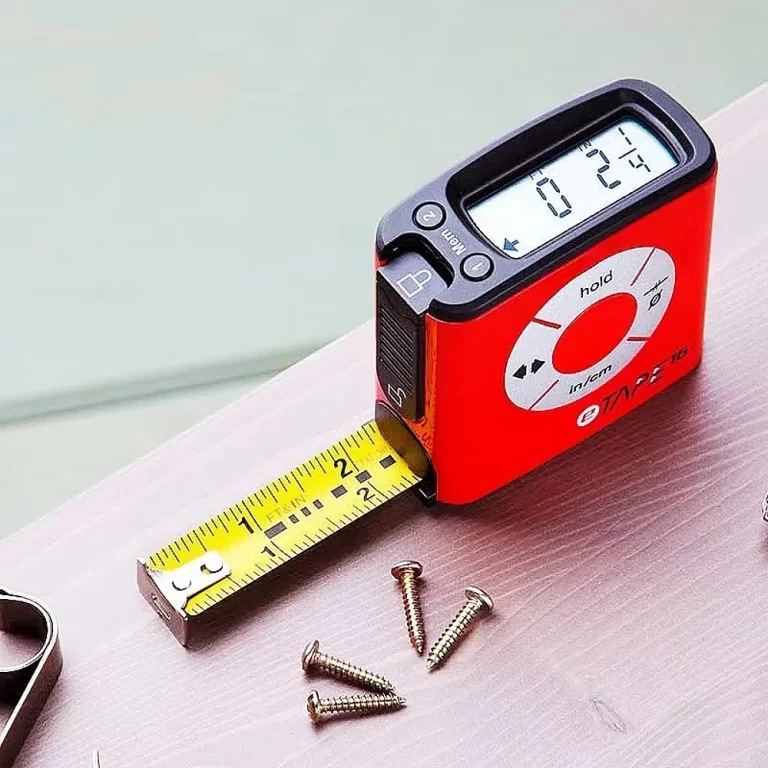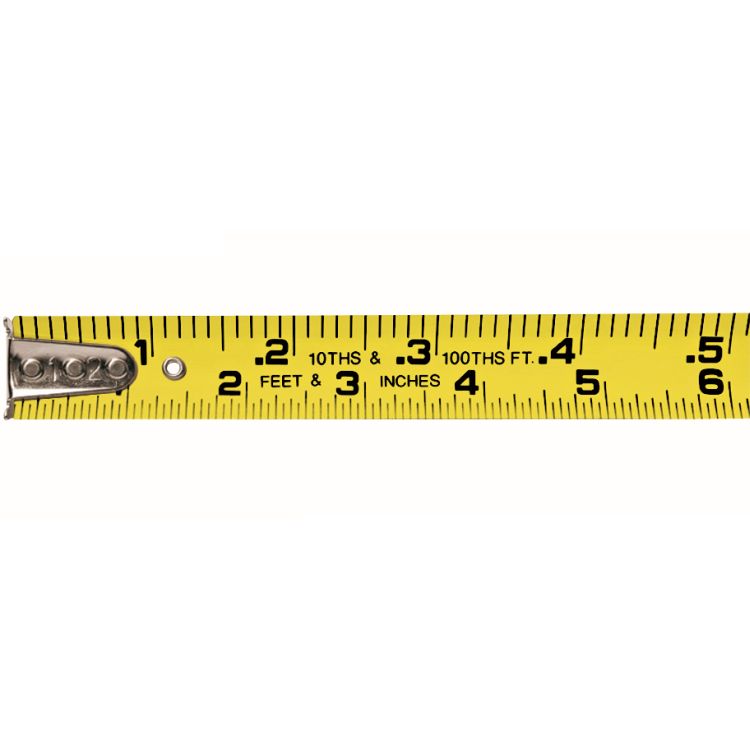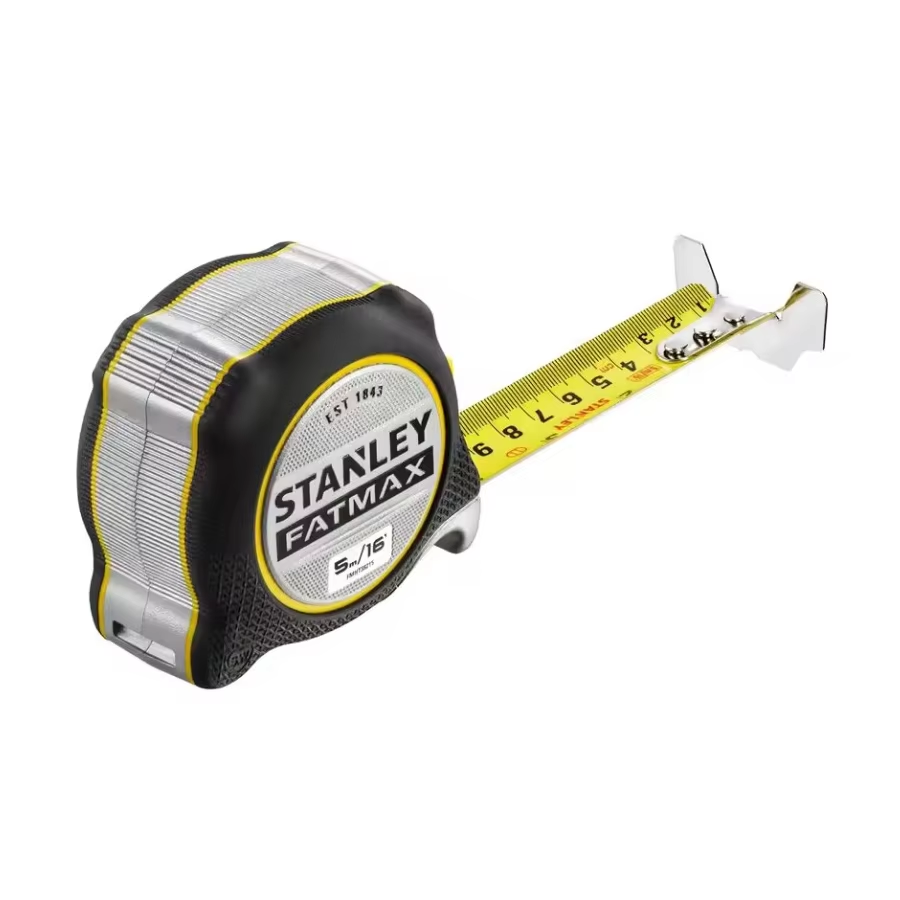
How Long Is a Tape Measure? Find the Right Length for Accuracy
Introduction to Tape Measures
When tackling any project, whether it’s building a bookshelf or sewing a garment, knowing how long is a tape measure becomes crucial. This indispensable tool provides accurate measurements, ensuring your work is precise and professional. However, tape measures come in various lengths, each suited for different tasks. In this comprehensive guide, we’ll explore the different lengths of tape measures, their uses, and how to choose the right one for your needs. By the end, you’ll have a clear understanding of how long is a tape measure and which one is best for your specific projects.
What is a Tape Measure?
A tape measure is a flexible ruler used to measure size or distance. It typically consists of a retractable metal or fabric blade, marked with measurement units like inches, feet, or centimeters. Tape measures are compact and portable, making them a convenient tool for jobs ranging from home repairs to professional construction.
Tape measures are available in various lengths and designs to suit specific uses. They come in manual retractable, digital, or pocket-sized versions. Each type offers unique benefits for specific tasks.
Importance of Knowing Tape Measure Lengths
Knowing the correct tape measure length is crucial for accurate measurements. It ensures that the tool matches the task requirements. For example, a short tape measure works well for small crafts, while longer ones suit surveying large areas.
Choosing the wrong length can lead to errors and inefficiencies. It may also impact the quality of work. Familiarity with standard tape measure lengths helps ensure the right choice for any project, boosting productivity and precision.
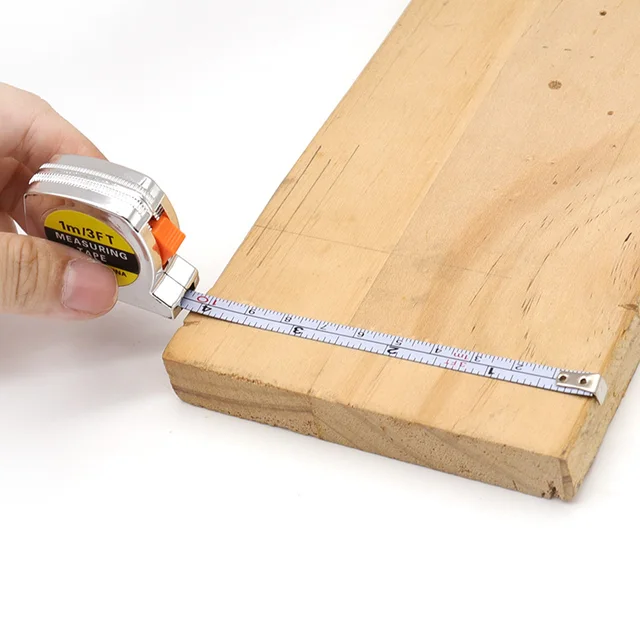 Standard Lengths of Tape Measures
Standard Lengths of Tape Measures
Understanding standard tape measure lengths is crucial for choosing the right tool for the job. Tape measures come in a variety of sizes to suit different purposes. Selecting the right one ensures accuracy, convenience, and efficiency for specific tasks.
Common Tape Measure Sizes for Different Uses
Tape measures are available in several common lengths to accommodate diverse needs:
- 12 Feet (3.6 Meters): Ideal for household tasks like measuring furniture or small spaces.
- 16 Feet (4.8 Meters): Commonly used for DIY projects and light construction work.
- 25 Feet (7.6 Meters): Perfect for professional use, especially in construction and carpentry.
- 50-100 Feet (15-30 Meters): Used for outdoor measurements like landscaping or site surveys.
Each size has advantages for specific situations. Shorter ones are light and easy to handle. Longer tape measures work for large-scale tasks but might be harder to maneuver. Selecting a length based on your project ensures effective measurement and saves time.
Differences Between Metric and Imperial Measurements
Tape measures often include both metric and imperial units. This dual-scale design is versatile worldwide:
- Metric Measurements: Displayed in centimeters and meters, preferred in many countries like Europe and Asia.
- Imperial Measurements: Marked in inches and feet, commonly used in the United States.
Some tape measures offer only one type of unit, while others feature both systems on the blade. Selecting a metric or imperial tape measure depends on your region or specific project requirements. For global collaborations, having both units improves flexibility and ensures clear communication between teams.
By understanding these lengths and measurement systems, you can select the best tape measure for your needs. This results in more precise and efficient work in any setting.
Tape Measure Lengths for Professional Use
Tape measures designed for professional use are tailored to specific industries and needs. Whether you’re in construction or tailoring, using the correct length enhances efficiency and accuracy. Understanding these industry-specific lengths ensures you pick the right tool for high-quality work.
Construction and Carpentry Lengths
In construction and carpentry, tape measure lengths range from 16 to 35 feet. These sizes are ideal for tasks like measuring walls, lumber, or framing materials.
- 16 Feet: Best for smaller projects like home renovations or basic carpentry tasks.
- 25 Feet: The standard for professional carpentry and construction. Suitable for general site measurements.
- 35 Feet: Perfect for large-scale construction. Used for extended areas, framing, or architectural tasks.
Longer tape measures in this range combine durability and portability. They are often made with sturdy materials like metal blades for tough job conditions. Selecting the right length ensures precise measurements and reduces project errors.
Tailoring and Sewing Tape Measure Lengths
Tailors and seamstresses use flexible tape measures for fabric work. These tape measures are typically 60 inches or 150 centimeters long.
- Standard 60 Inches (Imperial): Common for outfits, dresses, and detailed fabric measurements.
- 150 Centimeters (Metric): Popular worldwide for sewing and garment creation.
These tape measures are often made of soft fabric or plastic for easy folding and smooth handling. They feature clear markings and enhanced flexibility to contour around curves and angles. A shorter length ensures precision in tight spaces, essential for tailoring detailed designs.
Using professional tape measures suited for construction and tailoring boosts efficiency, saves time, and ensures accurate results.
Specialty Tape Measures
Specialty tape measures are tailored to specific tasks, offering unique features and lengths. These tools address particular needs beyond standard measurements, ensuring efficiency and precision for specialized jobs.
Short-Length Tape Measures
Short-length tape measures are compact tools designed for tasks requiring precision in small spaces. These tape measures typically range from 3 to 12 feet, making them ideal for:
- Crafting and DIY Projects: Perfect for measuring small objects or intricate details.
- Home Décor Tasks: Useful for hanging pictures or measuring shelves and furniture dimensions.
- Small Repairs: Handy for projects like adjusting cabinet fittings or fixing small appliances.
These tape measures are lightweight and easy to carry. They often fit in pockets or small toolkits, adding convenience. The shorter length minimizes bulk, enhancing maneuverability in tight spaces. Additionally, they often come with clear, easy-to-read markings, ensuring accurate measurements for detailed tasks.
Long Tape Measures for Surveying and Landscaping
Long tape measures are designed for large-scale measurements, often exceeding 50 feet in length. These tools are used in fields requiring extensive range and precision, such as:
- Surveying: Essential for measuring land boundaries and plotting construction sites.
- Landscaping: Useful for designing layouts for gardens and outdoor spaces.
- Sports Fields: Employed for chalking lines and establishing field dimensions.
Long tape measures are typically made with durable materials like fiberglass or reinforced steel. This ensures longevity and resistance to wear during outdoor use. They often include winding mechanisms for smooth retraction and compact storage. These tools are perfect for professionals working on expansive projects where regular tape measures fall short.
By choosing the right specialty tape measure, you can ensure efficiency and accuracy, no matter the task.
Choosing the Right Tape Measure Length
Selecting the right tape measure length is vital for accurate measurements in any task. Different lengths suit varied needs, so understanding key factors helps make the best choice.
Factors to Consider When Selecting a Tape Measure
When choosing a tape measure, consider these important factors:
- Project Type: Identify the size and scale of your task. Small crafts need shorter tape measures, while large projects require longer ones.
- Portability: Short tape measures are lightweight and easy to carry, ideal for everyday use. Longer ones may need more storage space.
- Durability: Opt for sturdy materials like steel blades for rugged tasks, or fabric for soft handling.
- Measurement System: Select metric or imperial units based on your location or project requirements. Dual-unit tape measures offer flexibility.
- Cost: Assess your budget. Higher-quality tape measures may last longer and offer better accuracy.
By evaluating these factors, you ensure a tape measure matches your task and environment.
Guidelines for Different Tasks and Industries
Follow these guidelines to select the optimal tape measure length for your specific needs:
- DIY Projects and Crafts:
- Use tape measures between 3 to 16 feet.
- Ideal for small repairs, crafting, and home décor tasks.
- Construction and Carpentry:
- Choose lengths from 16 to 35 feet.
- Durable tape measures address tasks like framing and measuring large structures.
- Surveying and Landscaping:
- Opt for tape measures over 50 feet.
- Suitable for extensive tasks like boundary measurement and outdoor planning.
- Tailoring and Sewing:
- Use flexible tape measures around 60 inches or 150 cm.
- Essential for fabric measurements and garment creation.
Selecting a tape measure with the right length and features enhances efficiency and precision. Tailoring the choice to your industry or task ensures quality results every time.
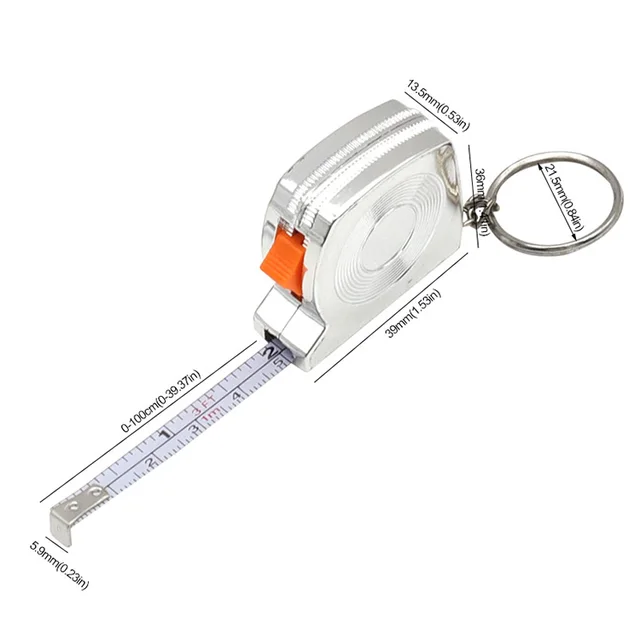 Materials and Durability of Tape Measures
Materials and Durability of Tape Measures
Understanding the materials used in tape measures can help you choose one that lasts longer and withstands the demands of your projects.
Common Materials Used
- Steel Tape Measures: Known for their durability and resistance to wear and tear. They are less flexible but highly durable, making them suitable for heavy-duty use.
- Fiberglass Tape Measures: More flexible and lightweight compared to steel, making them ideal for tasks that require bending around corners or measuring in tight spaces.
- Cloth Tape Measures: Typically used in tailoring and sewing, these tape measures are soft, flexible, and retractable, making them easy to use on fabric.
Features Enhancing Durability
Modern tape measures come with features that enhance their durability and functionality:
- Reinforced Cases: Protect the tape from damage and prevent it from bending or breaking.
- Non-Glare Coatings: Make the measurements easier to read in various lighting conditions.
- Locking Mechanisms: Secure the tape in place, allowing for precise measurements without constant adjustments.
Benefits of Using the Right Tape Measure Length
Using the correct tape measure length offers several advantages:
Enhanced Accuracy
A tape measure of the appropriate length ensures that your measurements are precise, which is crucial for achieving the desired results in your projects.
Increased Efficiency
Having the right length reduces the need to adjust the tape frequently, saving time and effort during your work.
Versatility
Different lengths cater to a variety of tasks, making a multi-length toolkit possible and adaptable to different project requirements.
Maintaining Your Tape Measure
Proper maintenance extends the lifespan of your tape measure and ensures it remains accurate:
Cleaning and Storage
- Keep It Clean: Wipe the tape and case regularly to remove dirt and debris.
- Store Properly: Store your tape measure in a dry place to prevent rusting, especially for metal tapes.
Regular Inspections
- Check for Damage: Inspect the tape for frays, bends, or signs of wear. Replace it if necessary to maintain accuracy.
- Lubricate Moving Parts: Apply a light lubricant to the tape and locking mechanism to keep them functioning smoothly.
Safe Handling
- Avoid Overextending: Do not pull the tape beyond its maximum length to prevent damage.
- Use with Care: Handle the tape measure gently to avoid bending or breaking the tape.
 Comparing Tape Measure Types
Comparing Tape Measure Types
Different types of tape measures offer various benefits. Here’s how they compare:
Steel vs. Fiberglass Tape Measures
- Steel: More durable and strong, suitable for heavy-duty tasks. However, they are less flexible and can be prone to rusting if not properly maintained.
- Fiberglass: Highly flexible and lightweight, making them ideal for tasks requiring bending. They are also resistant to rust, but slightly less durable than steel in heavy-use scenarios.
Digital vs. Traditional Tape Measures
- Digital Tape Measures: Offer precise digital readouts, which can be easier to read and reduce human error. They may also include additional features like memory storage and Bluetooth connectivity.
- Traditional Tape Measures: Simpler and more reliable, with no need for batteries. They are generally more affordable and provide tactile feedback that some users prefer.
Metric vs. Standard Tape Measures
- Metric: Use centimeters and meters, making them ideal for international projects or for users who prefer the metric system.
- Standard: Use inches and feet, which are more common in countries like the United States and are often preferred for construction and carpentry work.
Innovations in Tape Measure Design
Modern tape measures incorporate innovative features to enhance functionality and user experience:
Self-Locking Mechanisms
These mechanisms automatically lock the tape in place when extended, making it easier to take accurate measurements without manual locking.
Magnetic Tips
Magnetic tips allow the tape to adhere to metal surfaces, providing one-handed operation and increased convenience during measurements.
Easy-Read Scales
Magnified numbers, contrasting colors, and backlit tape measures improve readability, especially in low-light conditions.
Ergonomic Handles
Comfortable, non-slip handles make extending and retracting the tape smoother and reduce hand fatigue during prolonged use.
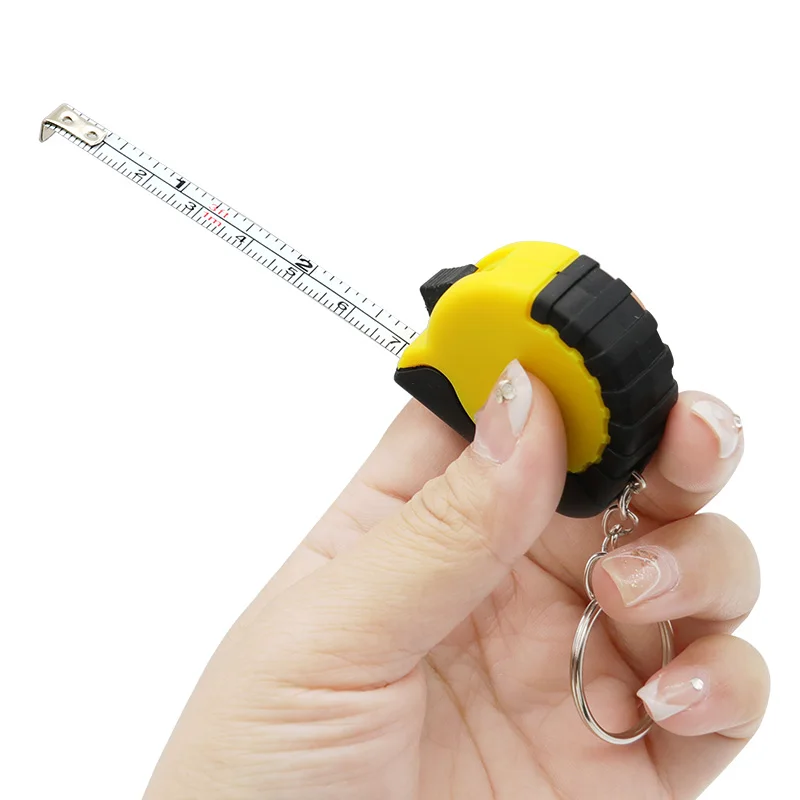 Frequently Asked Questions (FAQ) About How Long Is a Tape Measure
Frequently Asked Questions (FAQ) About How Long Is a Tape Measure
How long is a tape measure typically? Tape measures typically range from 12 feet to 100 feet. The most common lengths are 12 feet, 16 feet, and 25 feet, each suited for different types of projects.
What is the best tape measure length for home use?
For general home use, a 12-foot tape measure is usually sufficient. It offers versatility for most indoor and outdoor tasks without being too cumbersome.
Can I use a tape measure longer than 25 feet?
Yes, tape measures longer than 25 feet are available and are useful for large-scale projects like construction, surveying, and extensive landscaping. However, they are bulkier and less portable.
How do I choose the right tape measure length for my project?
Consider the scale and nature of your project. For small to medium tasks, a 12-foot or 16-foot tape measure works well. For larger projects, opt for a 25-foot tape measure or longer.
Are there tape measures specifically designed for certain professions?
Yes, different professions may prefer specific types of tape measures. For example, tailors use flexible, cloth tape measures, while construction workers prefer durable, steel or fiberglass tapes.
 Conclusion
Conclusion
Summary of Tape Measure Lengths
Tape measures come in various lengths to meet diverse needs. Standard options include 12, 16, 25, 50, and 100 feet. Short lengths are ideal for tasks like crafting and small repairs. Medium lengths are perfect for DIY projects and construction. Long lengths suit surveying, landscaping, and outdoor projects. Tailoring tape measures stand out with sizes like 60 inches (imperial) or 150 centimeters (metric).
Understanding these lengths helps select the right tool. Task requirements and measurement systems (imperial vs. metric) play a big role. Specialty options like flexible or reinforced tape measures also enhance accuracy based on specific purposes.
Final Tips for Selecting the Best Tape Measure
To choose the right tape measure, follow these tips:
- Match the Task: Select a length that fits your project size.
- Check Durability: Go for metal blades for rugged jobs, or fabric for softer handling.
- Prioritize Portability: Choose lightweight designs for daily use; ensure storage-friendly options for longer lengths.
- Consider Measurement Units: Dual-unit systems (imperial and metric) offer versatility and accuracy.
- Stick to Your Budget: Invest in quality tools that last longer and provide reliable results.
Making an informed choice ensures smooth, accurate measurements for any task. Understanding tape measure lengths and features improves efficiency, saving time and effort in every project.
